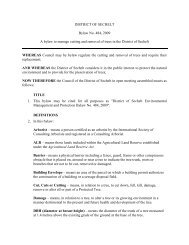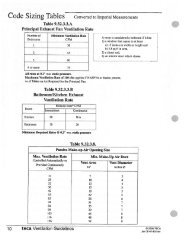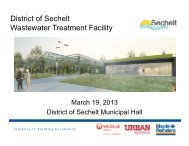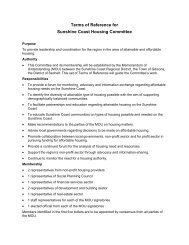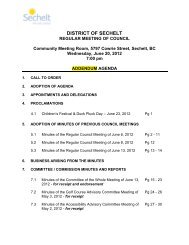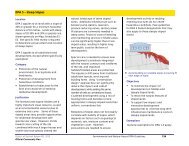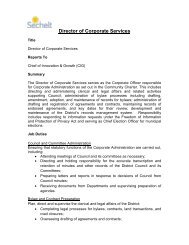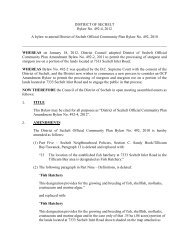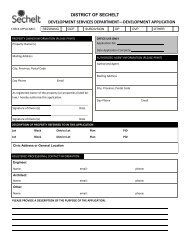District of Sechelt Urban Forest Plan
District of Sechelt Urban Forest Plan
District of Sechelt Urban Forest Plan
Create successful ePaper yourself
Turn your PDF publications into a flip-book with our unique Google optimized e-Paper software.
<strong>District</strong> <strong>of</strong> <strong>Sechelt</strong> <strong>Urban</strong> <strong>Forest</strong> <strong>Plan</strong> 2010<br />
Global Warming: “The trend <strong>of</strong> rising Earth’s average surface temperature caused predominantly by<br />
increased concentrations <strong>of</strong> GHGs in the atmosphere. Strictly speaking, global warming refers only to<br />
warming trends. However, the term “global warming” has become a popular term encompassing all<br />
aspects <strong>of</strong> climate change, including, for example, the potential changes in precipitation that will be<br />
brought about by an increase in global temperatures. The term is used interchangeably with the term,<br />
‘climate change’” 43 .<br />
Hazardous tree: is a tree or tree part which is considered, by a certified Arborist, to be in imminent<br />
danger <strong>of</strong> falling or which is interfering with the normal functioning <strong>of</strong> utility lines, municipal<br />
infrastructure, a septic system or building foundation as to be a danger. 44<br />
Old Growth: Old forest, usually defined to be <strong>of</strong> age class 9, which is 250 years and older. Old Growth<br />
may refer to specific characteristics that trees or ecosystems acquire over time and may attain those<br />
characteristics before age class 9. The term Old Growth usually refers to old forest in a natural state.<br />
Protected Areas: Areas that have been designated as parks or ecological reserves.<br />
Reforestation: “<strong>Plan</strong>ting <strong>of</strong> forests on lands that have recently previously contained forests but that have<br />
been converted to some other use”. 45<br />
Resilience: The capacity <strong>of</strong> an ecosystem to absorb disturbance, undergo change and still retain<br />
essentially the same function, structure, identity and feedbacks.<br />
Riparian Area: Area bordering a stream, river, lake or swamp, as defined in the Riparian Area<br />
Regulations.<br />
Salvage: Harvesting <strong>of</strong> dead or dying trees, usually those that have died as a result <strong>of</strong> windthrow, insects<br />
or disease.<br />
Sensitive Ecosystems: Fragile and/or rare ecosystems; are ecologically important because <strong>of</strong> the<br />
diversity <strong>of</strong> species they support.<br />
Structural Diversity : Variation in the structure <strong>of</strong> a forest stand, which may include varying stand<br />
densities, crown closures, tree heights, branching patterns, abundance <strong>of</strong> shrub, herbaceous and moss<br />
layers, species composition and the abundance <strong>of</strong> snags and coarse woody debris.<br />
Sustainable <strong>Forest</strong>ry: managing our forests to meet the needs <strong>of</strong> the present without compromising the<br />
ability <strong>of</strong> future generations to meet their own needs by practicing a land stewardship ethic which<br />
42 <strong>District</strong> <strong>of</strong> <strong>Sechelt</strong>. 2010a. Food Security. Website. The <strong>District</strong> <strong>of</strong> <strong>Sechelt</strong> has adopted this definition from Vancouver Coastal Health.<br />
43 Market Advisory Committee. 2007. “Glossary.” In Recommendations for Designing a Greenhouse Gas Cap-and- Trade System for California.<br />
44 <strong>District</strong> <strong>of</strong> <strong>Sechelt</strong>. 2009a.<br />
45 Market Advisory Committee. 2007.<br />
November 2010 Page 37





